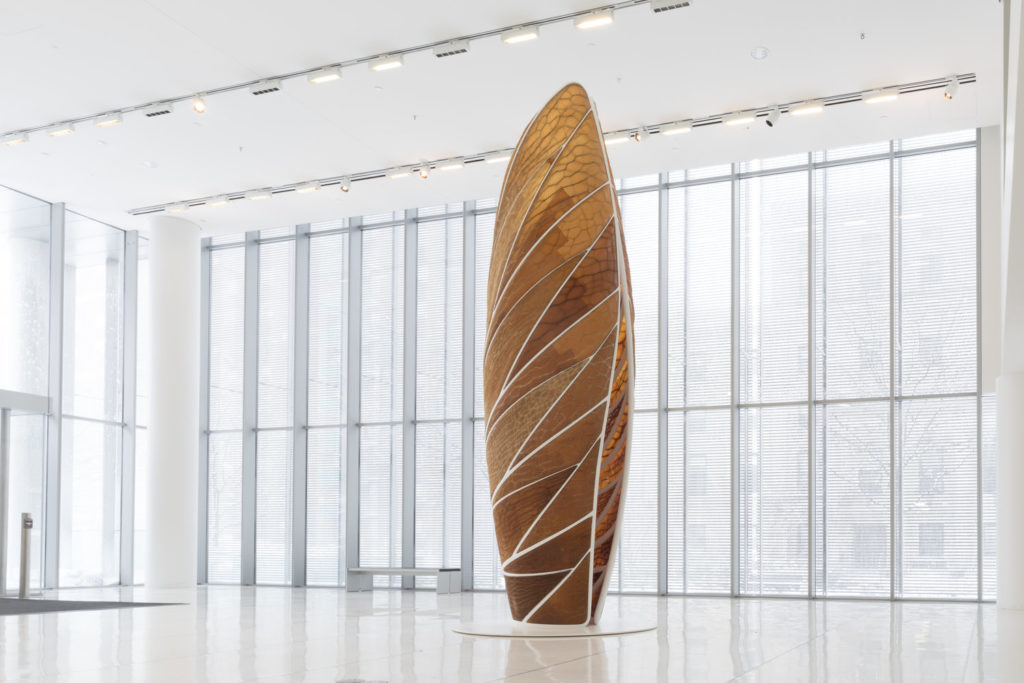
Could microbes combined with water be guided to selectively disintegrate and then be harnessed as agents of assembly? What would the ecology of a system that included microbes, biocompatible substrates and the contextual environment look like?
Those are some of the questions a team of MIT researchers set out to answer as part of the Aguahoja projects, outlined in an abstract by Andrea Shin Ling. Their theses: “The use of biological agents, such as bacteria, fungi, plant material and insects, is proposed as a viable design methodology that can include end-of-life material treatment and re-use as part of the design process.”
At the core of the Aguahoja project’s organic architectural structures is a chitin-cellulose-pectin composite that is part of “a water-dependent biocompatible material system that can act as the base scaffold for biofilms and microbial colonies,” states the abstract.
Decay by design is integral to design by decay. “Water is used to initiate the disintegration of the panels as well as initiate the growth of microbial cultures on the panels,” the abstract says.
Process builds responsiveness
The Aguahoja Pavilion used a robot to print the water-based composites into architectural-scale artifacts and panels to form the skin of the pavilion. As the team created the artful pavilion—part leaf, part cocoon—they wrestled with unknowns, such as uncontrolled deflection and warping of the bio-composite materials, due to relative humidity, and the constant, gradual dehydration of the material. They discovered that hydration dictated color, rigidity and flexibility.
Adjacent to the pavilion, environmentally responsive biocomposites line the wall. The Aguahoja Artifacts are alternately glossy, dense, soft, brittle, strong and tough as leather and each responds differently to environmental factors and seasonal changes of light and humidity as the process of decay takes place.
The organic tower and artifacts were designed by MIT Media Lab’s Mediated Matter Group as advised by Neri Oxman. The group sums up its vision of how design meets the geometry, chemistry and physics of nature: “Derived from organic matter, printed by a robot and shaped by water, this work points toward a future where the grown and the made unite.”
Sources: DSpace@MIT, Mediated Matter Group, designboom
 TEXTILES.ORG
TEXTILES.ORG


